READY TO GET STARTED?
REQUEST A FREE ESTIMATE
Fill out the form below or call (888) 466-7849 for a free, no-obligation estimate.
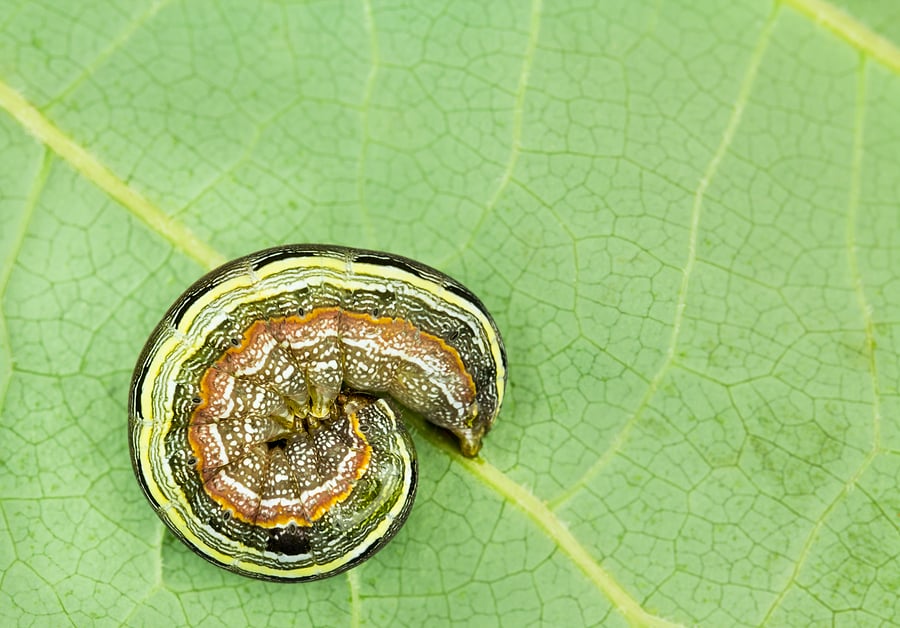
Are you noticing patchy areas of brown grass throughout your yard? This could be a sign that you have armyworms! While armyworms themselves are small, if found in large groups they can cause considerable damage to your lawn.
A type of caterpillar and a larva of moths, armyworms are striped with green, brown, and yellow colors. These pests will mostly feed on grass, plants, and vegetables. While one armyworm won’t cause significant damage, if they do end up multiplying, it can be tough to eradicate once they’ve infested the plants or grass. It’s important to know the signs of armyworms and the steps to prevent them from destroying your yard.
Signs of Armyworms
The first step in prevention is looking for signs that you have lawn and plant damage. Keep an eye out for patchy areas on your lawn that are turning brown. Brown spots in your yard are a major sign that your grass is being eaten by armyworms. Additionally, if armyworms are active on your property, you might see more birds, as well, as they will eat armyworms as a food source. You can also find these pests in their adult form as brown moths with a white spot on each wing. You can usually spot them feeding on nearby plants.
How to Prevent Armyworms
Preventing armyworms is easier than you think. Making sure that your grass is well-maintained with a good lawn care routine can help. Ensure that your grass is short by regularly mowing, frequently watering lawn and plants, and providing necessary nutrients for healthy green grass. It could be beneficial to consider reaching out to your local lawn care company or pest control provider who can provide you with an effective lawn care plan to help prevent armyworms and recommend effective products.
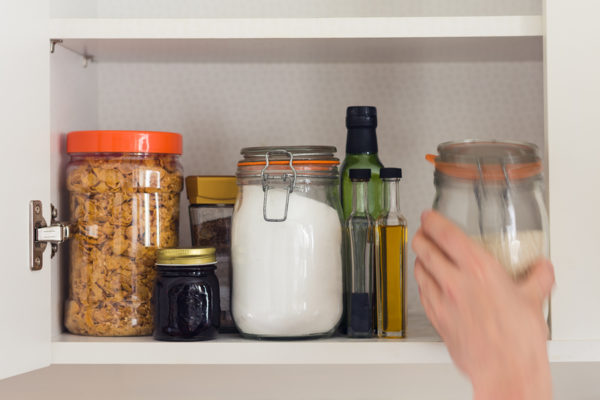
We’ve all been there. You start cooking and open up the bag of flour only to find a bug staring back at you! Yuck! Stored product pests include both storage and pantry pests and fabric pests. Pantry pests are most commonly found in kitchens and food storage areas. Fabric pests are most commonly found in closets and rooms with a source of fiber, fur, or leather. These pests are often not spotted until they leave their food source to crawl or fly around your home. So what kind of pests are these and what can you do to prevent them? Check out these common storage and pantry pests and our 12 tips to prevent them.
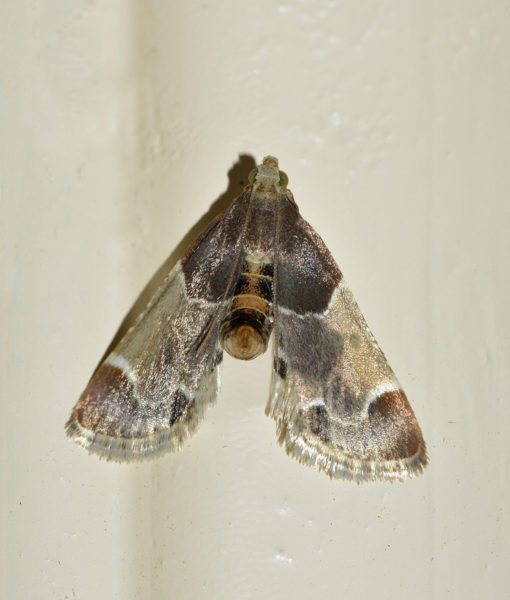
Indian meal moths are one of the most common stored food pests. They are commonly identified by their two toned wing pattern with tan and copper colors. They have a 1/2″ to 5/8″ wingspan. Indian meal moths feed on dried fruits, nuts, chocolate, powdered milk, birdseed, dog food and grains. These moths are most often spotted on ceilings, walls, and countertops. Indian meal moths are usually controlled by removing the infested source of food.
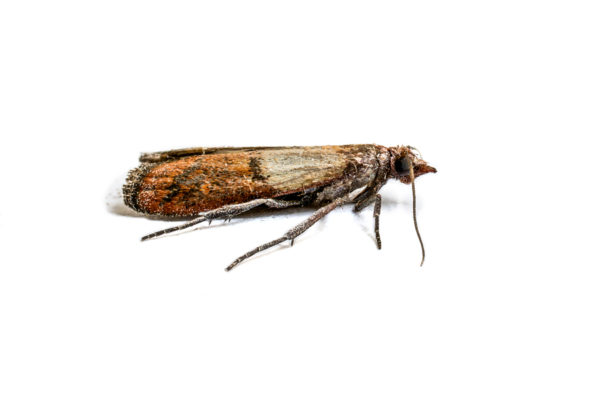
Clothes moths are one of the most common fabric pests. Clothes moths are smaller in size then Indian meal moths. They are identified by their shiny golden scales. Clothes moths are very secretive in nature and are primarily nocturnal. They feed on protein based fibers like wool cloth, carpets, furs, pet hair, piano felts, and natural hair brushes. Infested fabrics can be treated with dry cleaning but this doesn’t prevent reinfestation. Dry cleaned items should be stored in either cold storage or sealed in airtight containers with fresh cedar chips.
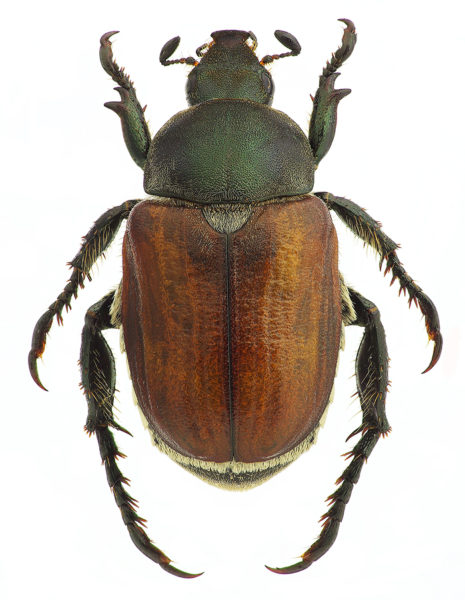
There are several types of beetles that feed on stored food and pantry items. Some of these include weevils, cigarette beetles, drugstore beetles, saw toothed grain beetles, larder beetles, mealworms, and flour beetles. These beetles feed on a variety of stored grains, fruits, spices, powdered milk, dried meat, and dead insects. Beetles can be controlled by finding their food source eliminating it. Once eliminated, all non-infested food supplies should be stored in air-tight containers.
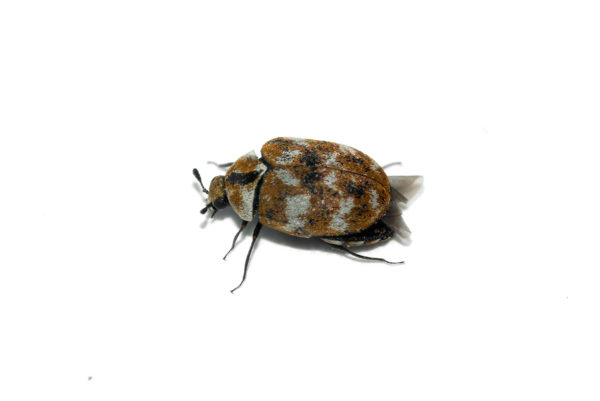
Carpet beetles are the most common fabric pest beetle species. They are small and round with black or mottled wings. Carpet beetles are often mistaken for bedbugs. These beetles will feed on any source of animal protein, fabrics, carpets, and even mounted animal trophies. Carpet beetles can be controlled by inspecting your furs, wool, feathers, silks, and carpets for their presence and treating with heat or cold.
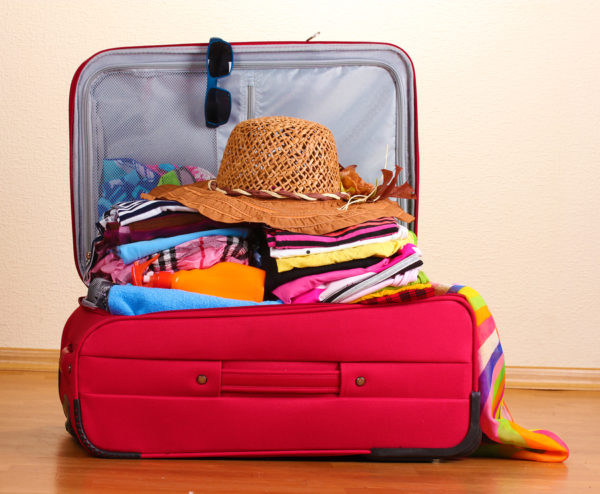
As summer approaches we kick off the start of vacation season. We’ll soon be taking advantage of warm weather, sunshine, and school getting out to take off to the beach, camping in the mountains, or just visiting out of town relatives. But people aren’t the only ones hitting the road – pests take advantage of our travels to hitch a ride back home with us too! What can you do to keep these pests from turning your home into an insect’s paradise? Check out these tips to keep your home pest free this summer.
Bed bugs, fleas, ticks, spiders, and roaches like to catch a ride with you from destination to destination, especially on road trips.
Silverfish, bed bugs, and even moths can hitch a ride in your suitcase. You can pick these up in hotels, your relatives’ homes, and even in the airport.
Camping is one of the most challenging environments for pest control. Let’s face it – pests live outdoors!
One place we don’t often think about picking up unwanted pests is in the homes of our relatives. Pests, however, don’t discriminate – they can be found in even the cleanest of homes.
If you suspect a pest problem when you get back from vacation, contact a pest control professional for a thorough inspection.
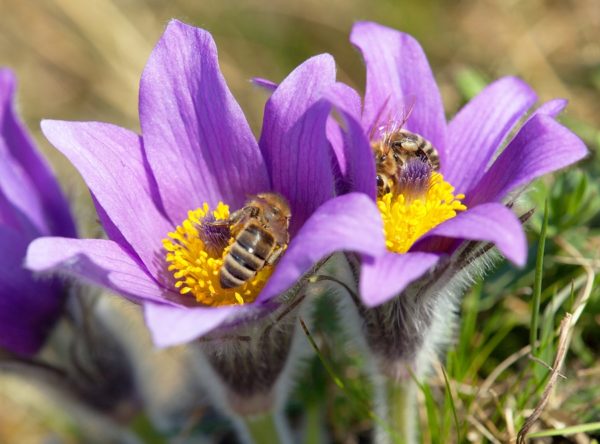
Pollination is when pollen grains are transferred from one flower to another. Pollination allows plants to produce seeds which is how they reproduce. Pollinators are animals and insects that are responsible for helping with the pollination of over 80% of the world’s flowering plants. Animal pollinators are vital in the reproduction of flowering plants and the production of most fruits and vegetables. They accomplish this by getting their food from flowers (think nectar and pollen) and collecting pollen on their bodies in the process. They then move on to another plant and leave the hitchhiking pollen behind, providing the new plants with the pollen they need to reproduce.
Some of the most common animal pollinators that come to mind are bees and butterflies. But did you know there are several other animals you might not have known who are expert pollinators? Here are a few animal pollinators along with the types of plants they pollinate:
Ants love nectar. Because they don’t fly they have to crawl into flowers to get to this nectar. Once inside the flower, pollen sticks to their bodies, allowing them to transfer it to other flowers when they move on. Tropical plants have nectar outside their flowers to attract ants to them. They then use these ants as “protectors” from other insects.
Ants pollinate flowers that:
Bats are known as one of the “night shift” pollinators. They are most common in tropical and desert climates. They are prevalent in the southwest US, Africa, Southeast Asia, and the Pacific Islands as pollinators. In fact, mangoes, bananas, and guavas depend on bats for pollination. In the US and Central America, the agave plant (which is used to make tequila) and the Saguaro cactus are also dependent on bats for pollination.
Bats pollinate flowers that:
Bees are known as the “champion” pollinators and are also the most common. There are over 4000 species of bees in the United States alone. Bees purposefully visit flowers to collect pollen and nectar which they use to feed themselves and their young. Many flowers that bees pollinate have an area of low UV reflection near their centers. Humans can’t see UV reflection so we don’t notice them. Bees, however, use them as a target to guide them to the center of the flower.
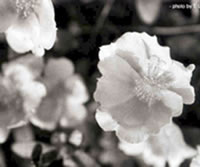
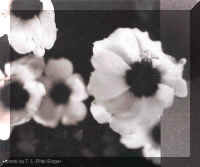
Human Perspective Bee Perspective
Photos courtesy of Apalachicola National Forest.
Bees pollinate flowers that:
Beetles were among the first insects to visit flowers. They are important pollinators for ancient species like magnolias. They are known as “mess and soil” pollinators because they eat through flower petals to get to the nectar and then defecate inside the flowers. Fossil records show that beetles were abundant as far back as 200 million years ago.
Beetles pollinate flowers that:
Birds are important pollinators of wildflowers. Hummingbirds are the most important bird pollinators in the United States. In the eastern United States there is only one species that acts as a pollinator and that is the ruby throated hummingbird. Hummingbirds have good eyesight and are extremely attracted to red flowers. They use their long bills to collect nectar and the pollen then dusts their heads and faces.
Hummingbirds pollinate flowers that:
Butterflies are very active during the day. Their body structure doesn’t allow them to pick up as much pollen as bees and other insects but they can see red where bees can’t. Butterflies produce scents that attract other butterflies of the opposite sex. This scent they produce smells like the flowers that they are attracted to.
Butterflies pollinate flowers that:
Two winged pollinators include flies, gnats, and mosquitoes. These insects aren’t as fuzzy as bees so they don’t pick up as much pollen. They are still, however, important pollinators, especially for some species of orchids.
Two-winged insects pollinate flowers that:
Moths are the other member of the pollination “night shift” along with bats. Some moths are also active as pollinators during the day. The yucca plant is one important plant that is dependent on moths for survival.
Moths pollinate flowers that:
Wasps look like bees but have much less hair. This makes them less efficient as pollinators because pollen is less likely to stick to their bodies. Wasps need pollen and nectar for energy. Fig wasps are responsible for pollinating almost 1000 species of figs.
Wasps pollinate flowers that:
There are several other uncommon pollinators. Lizards, geckos, and skinks can be pollinators. They climb inside flowers to drink the nectar and the pollen then sticks to their scales. Lemurs and possums can also pollinate. They use their snouts and tongues to get nectar from plants and then have their faces and snouts dusted with pollen.
We consider most of the animals and insects that are pollinators as nuisances and pests. As much as we don’t want them in our homes, they do play a very critical role in the survival of plants and food. It is important that while we should take steps to prevent them from invading our homes, we should be very careful with how we handle them should they make themselves at home in our area. If you suspect you have a problem with any of these pollinators, contact a professional pest control company who can give you a thorough evaluation and provide you with a treatment plan that both benefits you and protects these important species.
When you reflect on famous artists and their work, like the Mona Lisa by DaVinci for instance, you can immediately appreciate the beauty of their masterpiece. However, when the subject of an artwork is an insect, you might have a little more trouble seeing the beauty in it before wanting to call an exterminator! The brave souls who did make insects their muse had an appreciation for natural history, especially during the 17th century.
Studying bugs for their connection to the earth and nature led to some beautiful creations by Albrecht Dürer such as the Stag Beetle. Dürer said of art, “It is indeed true that art is omnipresent in nature, and the true artist is he who can bring it out.”
Some artists liked to focus on butterflies because they represented transformation and resurrection. Wenceslaus Hollar’s drawing Forty-One Insects, Moths and Butterflies features a collection of bugs of different varieties on displaying much like a “cabinet of curiosity.” Check out this painting and more below!
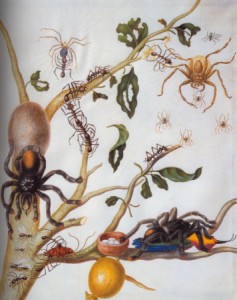
Maria Sibyla Merian, Branch of guava tree with leafcutter ants, army ants, pink-toed tarantulas, c. 1701-5
Melissa Brown
[email protected]
Source:
http://venetianred.net/2010/04/20/the-busy-bee-has-no-time-for-sorrow-insects-in-art/